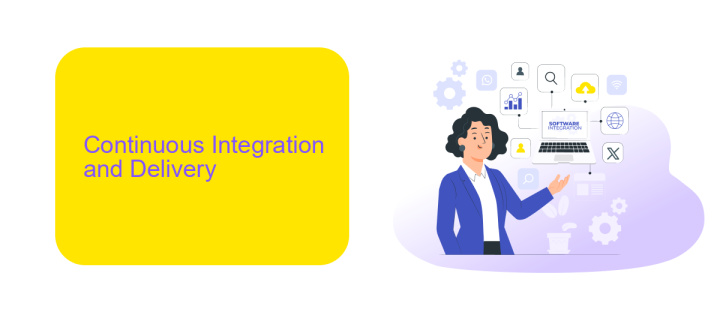DevOps Automation Workflow
In today's fast-paced tech environment, DevOps automation workflow is essential for enhancing efficiency and collaboration between development and operations teams. By automating repetitive tasks, reducing human error, and streamlining processes, organizations can accelerate software delivery and improve overall quality. This article explores the key components, benefits, and best practices for implementing a successful DevOps automation workflow.
Introduction
In the rapidly evolving world of software development, DevOps automation workflows play a crucial role in enhancing efficiency and ensuring seamless integration between development and operations teams. By automating repetitive tasks and streamlining processes, organizations can achieve faster deployment cycles, reduced human error, and improved collaboration.
- Continuous Integration and Continuous Deployment (CI/CD)
- Infrastructure as Code (IaC)
- Automated Testing
- Monitoring and Logging
- Security Automation
One of the key aspects of an effective DevOps automation workflow is the integration of various tools and services. Platforms like ApiX-Drive simplify this process by providing a user-friendly interface for connecting different applications and automating data transfer between them. This not only saves time but also ensures that all systems are synchronized and up-to-date, ultimately contributing to a more robust and reliable DevOps environment.
Continuous Integration and Delivery

Continuous Integration (CI) and Continuous Delivery (CD) are pivotal practices in modern DevOps workflows. CI involves the frequent merging of code changes into a central repository, followed by automated builds and tests. This ensures that new code integrates smoothly with the existing codebase, reducing integration issues and enabling early detection of bugs. CD takes this a step further by automating the deployment of code to production environments, ensuring that new features and fixes can be delivered to users swiftly and reliably.
To streamline these processes, tools like ApiX-Drive can be invaluable. ApiX-Drive facilitates seamless integration between various services and applications, automating data transfers and workflows without the need for manual intervention. By using such tools, development teams can ensure that their CI/CD pipelines are efficient and resilient, minimizing downtime and accelerating the release cycle. This ultimately leads to more robust software and a more responsive development process, keeping pace with the demands of modern software delivery.
Testing and Quality Assurance

Testing and Quality Assurance (QA) are critical components of any DevOps automation workflow. Ensuring that every piece of code is thoroughly tested before deployment helps maintain the integrity and reliability of the application. Automated testing tools can be integrated into the CI/CD pipeline to streamline this process and catch potential issues early.
- Unit Testing: Verifies the functionality of individual components.
- Integration Testing: Ensures different modules work together as expected.
- System Testing: Validates the complete and integrated software product.
- Performance Testing: Assesses the application's speed, scalability, and stability.
- Security Testing: Identifies vulnerabilities and ensures data protection.
One effective way to manage these tests is through integration services like ApiX-Drive. This platform allows seamless integration of various testing tools, automating the data flow and ensuring that all test results are consistently updated across the system. By leveraging such services, teams can focus on improving code quality and delivering robust applications more efficiently.
Deployment and Release Management

Effective deployment and release management are crucial components of a successful DevOps automation workflow. These processes ensure that new features, updates, and bug fixes are delivered to users efficiently and reliably. By automating deployment and release tasks, teams can minimize human error and accelerate the delivery pipeline.
One of the key aspects of deployment and release management is continuous integration and continuous deployment (CI/CD). This involves automatically building, testing, and deploying code changes to various environments. Tools like Jenkins, GitLab CI, and CircleCI are commonly used to streamline these processes.
- Automated testing to ensure code quality and functionality.
- Version control to track changes and maintain code history.
- Environment consistency to avoid discrepancies between development and production.
- Rollback mechanisms to quickly revert to previous versions if issues arise.
Integrating services like ApiX-Drive can further enhance deployment and release management by simplifying the connection between different tools and platforms. ApiX-Drive allows seamless integration with various applications, ensuring smooth data flow and reducing manual intervention. This can significantly improve the efficiency and reliability of the deployment process.
Monitoring and Observability
Monitoring and observability are crucial components of a DevOps automation workflow. Effective monitoring enables teams to detect, diagnose, and resolve issues in real-time, ensuring system reliability and performance. Observability, on the other hand, provides deeper insights into system behavior by collecting and analyzing data from logs, metrics, and traces. Together, they help maintain the health and efficiency of applications and infrastructure.
Integrating monitoring and observability tools can be streamlined with services like ApiX-Drive, which facilitates seamless data transfer between various platforms. ApiX-Drive allows teams to automate the integration of monitoring tools with their existing systems, ensuring that critical data flows uninterrupted. By leveraging such services, DevOps teams can enhance their ability to proactively manage and optimize their workflows, ultimately leading to more resilient and scalable systems.
FAQ
What is DevOps automation?
Why is automation important in DevOps?
How can I start implementing automation in my DevOps workflow?
What are some common tools used for DevOps automation?
How does ApiX-Drive help in DevOps automation?
Strive to take your business to the next level, achieve your goals faster and more efficiently? Apix-Drive is your reliable assistant for these tasks. An online service and application connector will help you automate key business processes and get rid of the routine. You and your employees will free up time for important core tasks. Try Apix-Drive features for free to see the effectiveness of the online connector for yourself.

